Traditional Eid Dresses: The Role Of Attire In Eid Celebrations And Simple Eid Dress Ideas
10/04/2024 2024-04-10 13:27Traditional Eid Dresses: The Role Of Attire In Eid Celebrations And Simple Eid Dress Ideas
Traditional Eid Dresses: The Role Of Attire In Eid Celebrations And Simple Eid Dress Ideas
Eid for Muslims all over the globe. We look forward to celebrating Eid-ul-Fitr. It is a period that marks the end of Ramadan, a month-long event where Muslims refrain from eating or drinking anything from sunrise to sunset every day.
Eid goes beyond religious obligations, turning out to be a time for cultural demonstrations, family ties, and community events.
During this celebration, traditional clothes hold centre stage, being more than just an accessory but an emblem of numerous values and customs passed down through generations in Islamic culture.
This article will focus on the importance of traditional dresses during Eid, how they can be used to make Eid celebrations lively, and some beautiful yet simple dresses for this year’s celebration that can be worn.
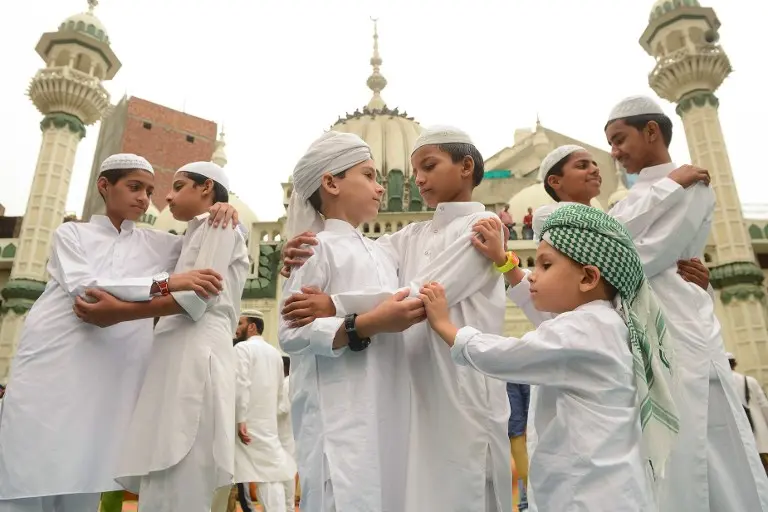
What is the significance of Eid?
In Islam, Eid is a highly important day as it marks the end of the Ramadan fasting month, when Muslims fast, pray, reflect, and do good deeds for others. There are two main Eids in Islam: Eid al-Fitr and Eid al-Adha.
1. Eid al-Fitr:
This holiday, also called the “festival of breaking fast,” usually takes place immediately after Ramadan on the first day of Shawwal Islamic month. The worldwide Muslim community celebrates this period with Eid traditional clothes, joy, thanks, and merriment.
On this day, Muslims offer prayers together with other members of their religion; give out charity (Zakat al-Fitr) to those that need it most, and exchange gifts and break bread during family gatherings. Besides emphasising forgiveness, reconciliation, and strengthening intra-community ties, Eid al-Fitr also reminds us about family loyalties.
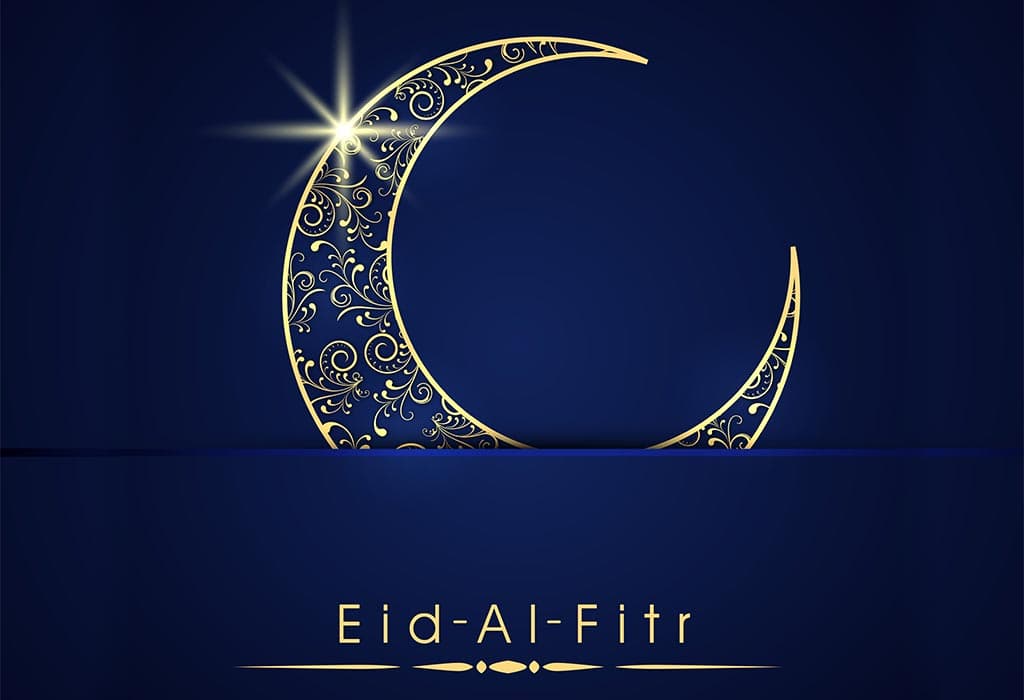
2. Eid al-Adha:
Eid al-Adha commonly known as “the feast of sacrifice”, is celebrated in memory of Prophet Ibrahim’s willingness to sacrifice his son Ishmael. However, God provided another sacrificial animal for him before he did it.
This happens on the 10th day of Dhu al-Hijjah which is the last month according to the Islamic calendar, coinciding with the Haj pilgrimage every year in Mecca. During Eid Al Adha Muslims all over the world perform Qurbani or sacrifice.
When they slaughter a sheep, goat, cow, or camel, they remember Ibrahim’s obedience by sharing meat among his family relatives as well as friends and poor people.
Generally, the occasion serves as a time for spiritual reflection; gratitude; unity within communities; Eid traditional clothes, and generosity that promote faithfulness towards God among Muslims globally.
Significance of Traditional Eid Dresses
There are many different types of cultural and religiously significant Eid traditional dress that Muslims wear during the celebrations. These garments come in various forms depending on local customs, cultural origins, and individual preferences all to make the celebration more festive therefore reflecting how important it is.
Here are some key aspects of the significance of traditional Eid dresses:
1. Cultural Identity:
Different regions and countries within the Muslim world often have their own unique styles of traditional Eid dresses that represent their culture. They may feature patterns, colours, textiles, or designs that have been handed down through generations, enabling people to bond with their heritage and take pride in who they are.
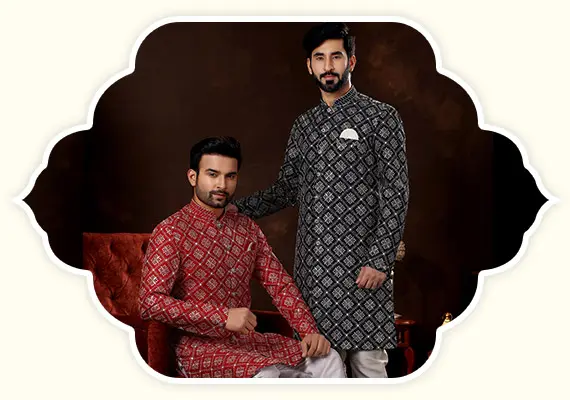
2. Religious Observance:
The practice of wearing special clothes for Eid has deep spiritual meaning associated with this holiday. Muslims feel obliged to don their finest garments when going for prayer services on Eid day (Schultz 128). In doing so, they show respect for God’s sanctity as well as gratitude towards his blessings.
3. Celebration and Joy:
During this festive season, Eid traditional dress clothing plays an essential part in creating a celebratory mood during Eid festivities. Bright colors often symbolize happiness while intricate designs stand for wealth and luxury fabrics denote abundance. Additionally, changing into either new or freshly laundered clothes adds further excitement and anticipation around these events.
4. Community Connection:
It fosters community connection and solidarity among Muslims when traditional Eid dresses are put on. Regardless of background or social status, coming together for Eid prayers and celebrations in their best clothes makes those participating feel a sense of unity and belonging. The traditional attires serve as a visible reminder that all Muslims across the globe have common values and traditions.
5. Symbol of Gratitude:
For many Muslims dressing up in traditional dress for Eid or wearing Eid wear is a symbol of appreciation for the blessings they have received throughout Ramadan month and an opportunity to celebrate the festival with family members. Additionally, wearing these clothes is perceived as showing gratitude to God for His compassion and generosity.
Traditional Eid dresses stand as significant as symbols of cultural identity, religious observance, celebration, community connection, and gratitude. Such importance plays a great role in making people celebrate this occasion more richly thereby reinvigorating shared ideas cherished by Muslims universally.
10 Exciting and Simple Eid Dresses For This Year
The fashion of this year’s Eid is all about combining traditional grace with a modern touch. Here are ten interesting and easy traditional dresses for Eid, according to the latest fashion styles:
1. Kaftan and Abaya:
They are best suited for the Eid festival, being comfortable and stylish at the same time. Opt for kaftans, which have some embroidery or abayas, which are embellished so that it adds some luxury to your dressing code.
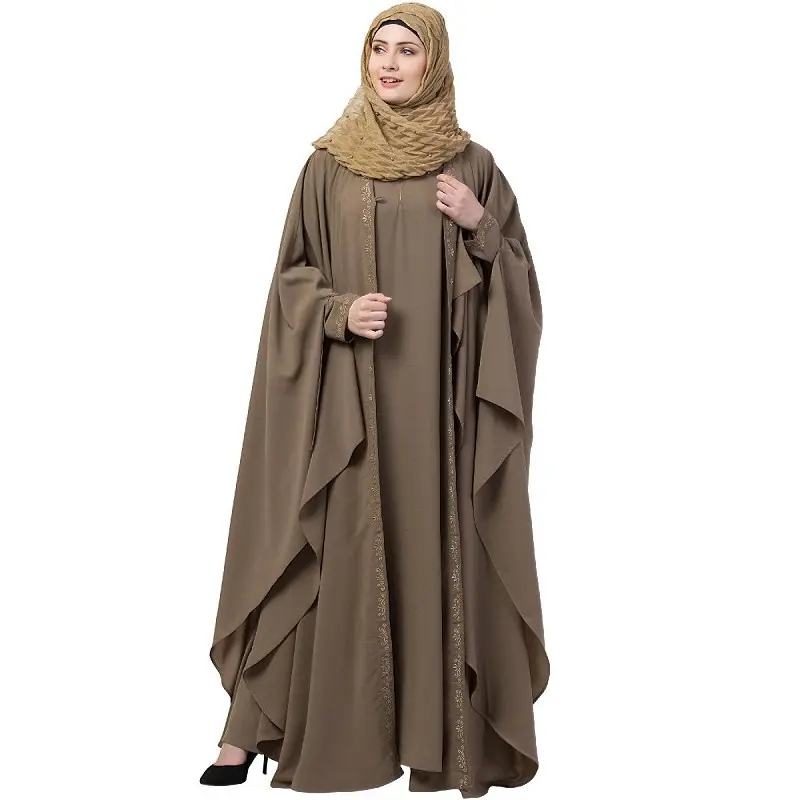
Their loose fit makes them perfect for daytime get-togethers or evening parties, blending traditional modesty and modern style. They come in materials such as light chiffons, heavily sequined beaded or zardozi adorned georgettes among others making each piece a work of art celebrating the spirit of Eid.
2. Lehenga:
For those who want to embrace their inner royalty, lehengas are a favorite choice as traditional Eid clothes because of their flared skirts and intricate details.
The 2024 trends showcase a blend of classic craftsmanship with contemporary design resulting in luxurious fabrics like silk, velvet, and brocade among others. While looking out for lehengas that have glittering sequins, beads, and stones if you want to enter with a bang make an entrance by wearing lehengas covered in glimmering sequins, beads, or stones.
Whether you prefer A-line cuts, mermaid silhouettes, or voluminous flares there’s always a lehenga suiting your taste crafted especially to make you feel like an empress on this day.
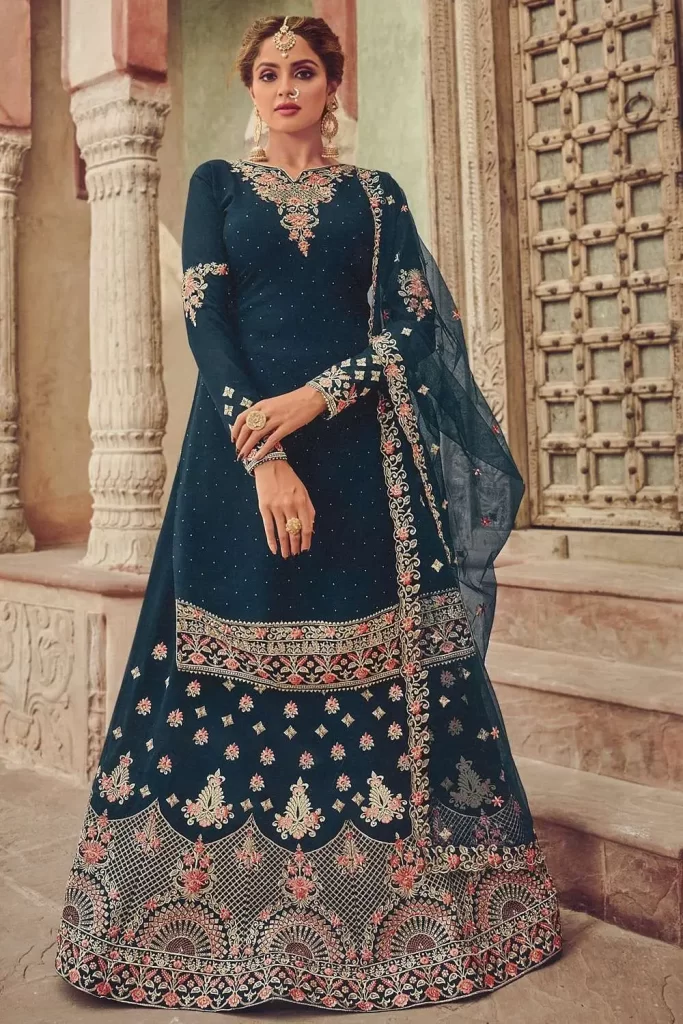
3. Sari:
Eid celebrations would never go wrong without Sarees reflecting poise and elegance belonging to timeless seasons. In 2024, this trend ranges from traditional Eid clothes with detailed zari works but now we have contemporary georgette Anarkalis having chic prints and patterns too.
Classic handwoven Banarasi or lustrous Kanjeevaram sarees speak volumes about a rich heritage, but fresh designs offer a new twist in terms of floral motifs and vibrant colors.
The look can be completed with statement jewelry like bangles or jhumkas that bring out the traditional touch combined with modern fashion.
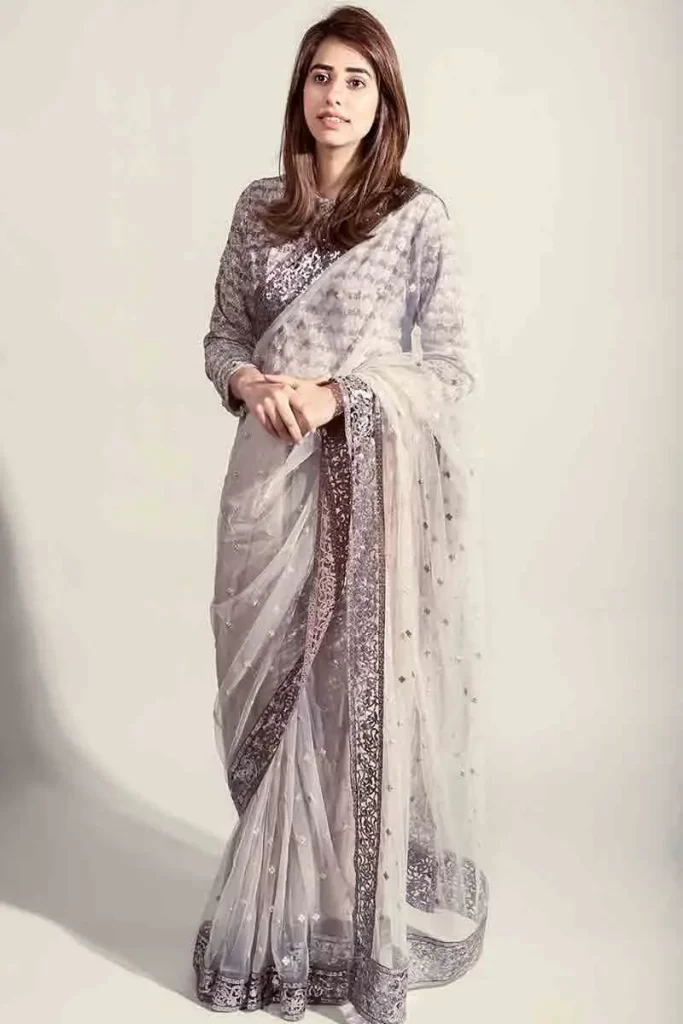
4. Salwar Kameez:
The salwar kameez is still an essential traditional Eid attire, combining tradition, class, and comfort. This year will feature sets of the two extremes: on the one hand are detailed traditional motifs in intricate embroidery whereas on the other hand is a minimalist design with sleek, contemporary cuts.
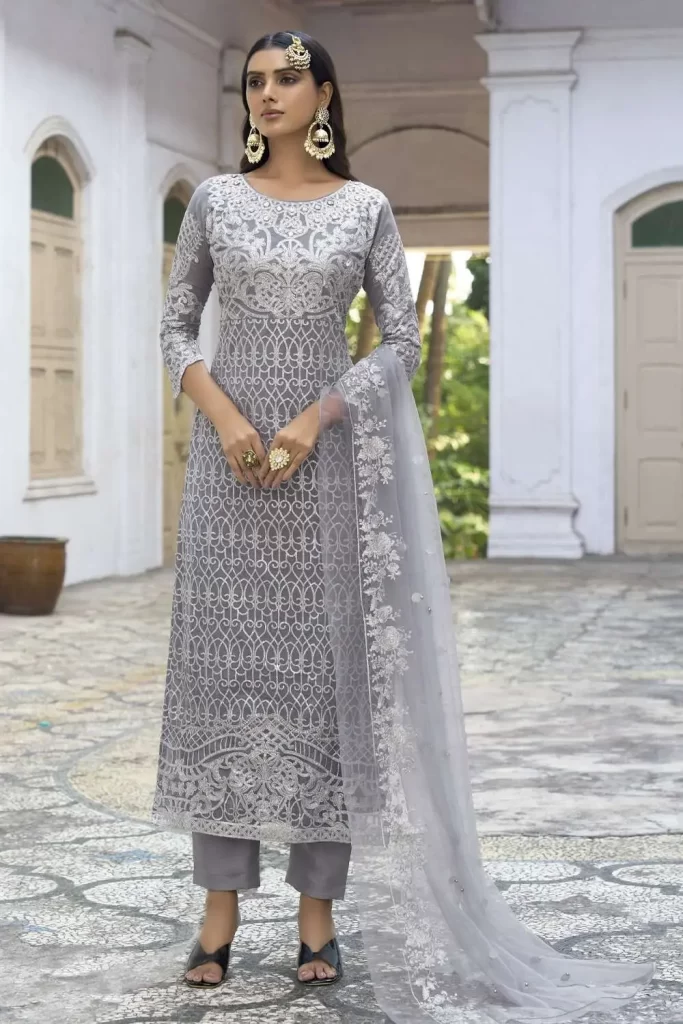
While some are made from light breathable cotton that can be worn during day time; others come in luxurious silk or chiffon suitable for evening events, all decorated with intricate threadwork, sequins, or beads. Be it the traditional straight-cut kameej or a modern asymmetric Eid suit there is always a salwar kameez to suit your style while you enjoy the festive mood of Eid.
5. Indo-Western Dresses:
Indo-western traditional Eid outfits offer a more cosmopolitan approach to traditional clothing. From elegant fusion gowns to dhoti pants paired with crop tops and saree-inspired dresses, this season’s trends cover everything.
These Eid suits blend both ancient and futuristic aesthetics for those who want something unique. Ensembles that stick out in terms of personal style yet capture attention through vibrant colours, innovative patterns, and creative shapes.
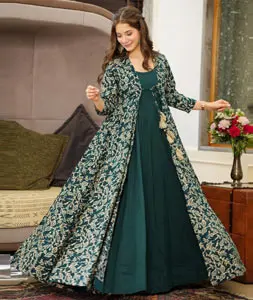
Eid ensembles can be uplifted by accessorising them with modern jewellery such as ear cuffs and layered necklaces.
These current fashion concepts for Eid, have been inspired by both old-fashioned attire and new interpretations that make them fashionable as well as comfortable during celebrations.
Weaving Memories Through Threads
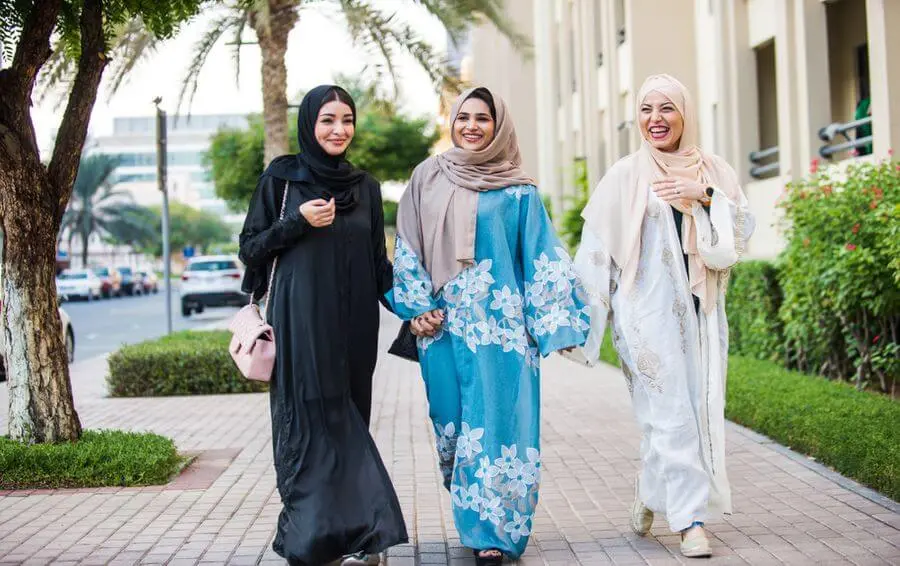
Traditional Eid dresses serve as more than just garments; they embody a rich tapestry of cultural heritage, religious reverence, celebration, community unity, and gratitude.
Muslims gather during Eid time wearing their best clothes and weave memories through threads to create moments that are joyful with relation and thought about for generations.
Let these traditions always motivate us towards faith, kindness, and family spirit, epitomising this blessed season.
Frequently Asked Questions (FAQs)
Why are traditional Eid dresses significant?
Traditional Eid dresses symbolise cultural identity, religious observance, celebration, community connection, and gratitude, enriching the Eid experience and reinforcing cherished values and traditions among Muslims worldwide.
What are some popular types of traditional Eid dresses?
Popular types include kaftans, abayas, lehengas, sarees, salwar kameez, and indo-western dresses, each reflecting unique cultural styles and preferences within the Muslim world.
How do traditional Eid dresses contribute to community unity?
By showcasing cultural identity and fostering a sense of belonging, traditional Eid dresses promote unity among Muslims, regardless of background or social status, during Eid prayers and celebrations.













